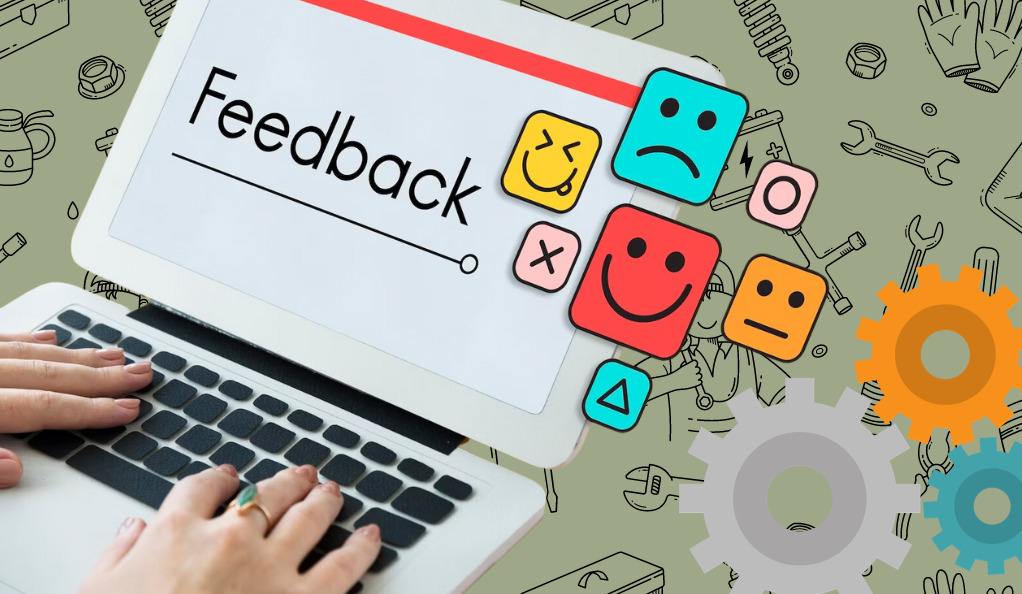In today’s interconnected world, online collaboration has become an indispensable tool for businesses and individuals alike. As teams spread across different geographies and time zones, the need for efficient and secure online communication tools has never been greater. However, with this convenience comes a set of challenges, primarily concerning security and confidentiality. This section delves deep into the importance of online collaboration in the modern era and the inherent risks it poses.
The Rise of Online Collaboration
The digital age has transformed the way we work. Gone are the days when teams needed to be in the same physical location to collaborate effectively. With the advent of cloud computing, high-speed internet, and advanced collaboration tools, teams can now work seamlessly from any corner of the globe. A study by Gartner found that by 2022, 80% of businesses would rely on collaboration tools for their day-to-day operations, a stark rise from just 35% in 2019.
The Double-Edged Sword of Convenience
While online collaboration offers unparalleled convenience, it also brings forth several challenges. The most pressing of these is the issue of security. As teams share sensitive information online, the risk of data breaches, cyber-attacks, and unauthorized access increases manifold. A report by Cybersecurity Ventures predicted that cybercrime damages would hit $6 trillion annually by 2021, with a significant portion attributed to breaches in online communication platforms.
Navigating the Challenges
Understanding the challenges is the first step to navigating them. As the subsequent sections of this article will elucidate, with the right tools, strategies, and awareness, teams can leverage the benefits of online collaboration while minimizing its risks. From choosing the right platform to setting clear communication guidelines, there’s a lot that businesses can do to ensure safe and efficient online teamwork.
Choosing the Right Platform
The foundation of secure online collaboration lies in selecting the right tools. With a plethora of options available, it’s crucial to understand the features and security protocols of each platform to make an informed decision.
Evaluating Security Features
Before adopting any collaboration tool, it’s essential to assess its security features. Here are some key aspects to consider:
- End-to-End Encryption: Ensure that the platform encrypts data both in transit and at rest. This means that only the sender and the recipient can access the content of the communication, making it difficult for hackers to intercept.
- Multi-Factor Authentication (MFA): MFA adds an extra layer of security by requiring users to provide two or more verification methods to access their accounts.
- Regular Updates: Platforms that frequently release updates typically address known vulnerabilities, ensuring that the tool remains secure against emerging threats.
- Data Backup and Recovery: In case of any data loss, the platform should have a robust backup and recovery system in place.
Importance of Using Reputable Platforms
While newer platforms might offer innovative features, it’s often safer to opt for established platforms with a proven track record in security. These platforms have been tested by a larger user base and have had more opportunities to identify and rectify potential security flaws.
User Reviews and Feedback
Another effective way to gauge the security and efficiency of a platform is to consider feedback from its current users. Online forums, reviews, and industry reports can provide valuable insights into the real-world performance and potential vulnerabilities of a platform.
Setting Clear Expectations
Once the right platform is chosen, it’s essential to set clear expectations for team members. This not only ensures efficient collaboration but also minimizes potential security risks.
Establishing Team Guidelines
Draft a comprehensive set of guidelines that detail:
- Communication Etiquette: Define what constitutes appropriate communication, the kind of language to be used, and the frequency of communication.
- Data Sharing Protocols: Specify how sensitive information should be shared, who has access to what data, and the steps to take in case of any discrepancies.
- Use of External Devices: If team members are using personal devices, set guidelines on the required security measures, such as updated antivirus software and secure Wi-Fi connections.
The Role of Team Leaders

Team leaders play a pivotal role in ensuring safe online collaboration. They should:
- Regularly Review Access: Periodically review who has access to specific data and tools, revoking access for those who no longer need it.
- Conduct Training Sessions: Organize regular training sessions to educate team members about the latest security threats and best practices.
- Be Approachable: Encourage team members to report any suspicious activities or potential breaches immediately.
Online Etiquette and Professionalism
In the realm of online collaboration, etiquette goes beyond mere politeness. It plays a pivotal role in ensuring clear communication, fostering a positive work environment, and maintaining the confidentiality of shared information.
The Do’s and Don’ts of Online Communication
- Do’s:
- Be Clear and Concise: Avoid ambiguity by being direct in your communication.
- Use Professional Language: Steer clear of slang or overly casual language.
- Respect Time Zones: When scheduling meetings or sending messages, be considerate of team members in different time zones.
- Use Appropriate Channels: Use designated channels or platforms for specific topics to avoid clutter and confusion.
- Don’ts:
- Avoid Over-Sharing: Refrain from sharing personal or irrelevant information in professional channels.
- Don’t Use ALL CAPS: It can come across as shouting or aggressive.
- Avoid Sending Large Files Without Notice: Always check with recipients before sending large files that might disrupt their workflow.
- Refrain from Discussing Confidential Information in Public Channels: Use private channels or direct messages for sensitive topics.
Respecting Boundaries and Maintaining Confidentiality
Online collaboration blurs the lines between professional and personal spaces. It’s crucial to:
- Respect Privacy: Don’t pry into personal matters or share unsolicited personal information.
- Handle Sensitive Data with Care: Always double-check before sending confidential information and ensure it’s going to the intended recipient.
- Log Out from Shared Devices: If accessing tools from a shared or public device, always log out after the session.
Managing Confidential and Sensitive Information
In the digital age, data is gold. Protecting sensitive information is paramount to maintaining trust and ensuring the smooth functioning of any collaborative effort.
Techniques for Safeguarding Sensitive Data
- Use Encrypted Channels: Always share sensitive data over encrypted channels, ensuring that only the intended recipients can access it.
- Regular Backups: Schedule regular backups of critical data to prevent loss from unforeseen events.
- Limit Access: Not every team member needs access to all information. Grant access based on roles and responsibilities.
The Role of Encryption and Backup Solutions
Encryption transforms data into a code to prevent unauthorized access. Combined with regular backups, it offers a robust defense against data breaches.
- Data Encryption Tools: Tools like VeraCrypt and BitLocker can encrypt entire drives, ensuring that data remains inaccessible even if the device is compromised.
- Backup Solutions: Cloud-based solutions like Dropbox and Google Drive offer automatic backup options. For more sensitive data, consider dedicated backup solutions with enhanced security features.
Feedback Mechanisms

Feedback is the cornerstone of improvement. In online collaboration, it’s essential to have mechanisms in place that allow team members to share their insights, concerns, and suggestions in a secure manner.
The Importance of Constructive Feedback
Constructive feedback fosters growth, innovation, and a positive work environment. Encourage team members to:
- Be Specific: General feedback can be confusing. Always provide specific examples or instances.
- Be Timely: Offer feedback soon after the event or action, ensuring it’s relevant and fresh in memory.
- Be Respectful: Always approach feedback with a positive intent, aiming for improvement rather than criticism.
Tools and Strategies for Giving and Receiving Feedback Safely
- Dedicated Feedback Platforms: Tools like SurveyMonkey or Google Forms can be used to gather anonymous feedback, ensuring that team members can voice their concerns without fear of repercussions.
- Regular Check-ins: Schedule regular one-on-one sessions between team members and leaders to discuss performance, concerns, and suggestions.
Educating the Team
Knowledge is the first line of defense against potential threats in the digital realm. Ensuring that every team member is well-informed and updated about the latest security practices is crucial for maintaining a secure collaborative environment.
Regular Training Sessions on Online Safety
- Scheduled Workshops: Organize monthly or quarterly workshops focusing on the latest security threats and best practices. This can include topics like phishing awareness, password management, and safe browsing habits.
- Guest Speakers: Invite cybersecurity experts to share their insights and provide hands-on training to the team.
- Interactive Modules: Use e-learning platforms to create interactive training modules that team members can access at their convenience.
Staying Updated with the Latest Security Threats and Solutions
- Subscribe to Cybersecurity Newsletters: Sources like Cybersecurity Insider or The Daily Swig provide regular updates on the latest threats and vulnerabilities.
- Join Online Forums: Platforms like Stack Exchange’s Information Security community can be a valuable resource for real-time discussions on emerging threats.
- Regularly Update Software: Ensure that all collaboration tools, operating systems, and software used by the team are regularly updated to their latest versions.
Monitoring and Limiting Access
While trust is a fundamental aspect of teamwork, it’s essential to strike a balance between accessibility and security. Monitoring and appropriately limiting access can prevent potential breaches and misuse of information.
Role-Based Access to Sensitive Information
- Define User Roles: Clearly define roles within the team, such as “Admin,” “Editor,” “Viewer,” etc., and assign access rights accordingly.
- Regular Audits: Periodically review access rights to ensure that only relevant team members have access to specific data or tools.
- Temporary Access: For team members or external collaborators who only need short-term access, ensure that their permissions are revoked once their task is completed.
Regular Audits and Monitoring of Team Communication
- Activity Logs: Use tools that provide detailed activity logs, allowing team leaders or IT personnel to review actions taken by team members.
- Alerts for Unusual Activity: Set up automated alerts for any unusual or unauthorized activities, such as multiple failed login attempts or access from unfamiliar locations.
- Feedback Channels: Establish clear channels where team members can report any suspicious activities or concerns they might have.
Conclusion
The digital age has revolutionized the way teams collaborate, bringing forth unparalleled convenience and efficiency. However, with these benefits come challenges, especially concerning security and confidentiality. By implementing robust security practices, staying updated with the latest threats, and fostering a culture of awareness and responsibility, teams can navigate the digital realm safely and productively. The journey towards secure online collaboration is ongoing, but with the right tools and mindset, any team can harness the power of the internet without compromising on safety.








